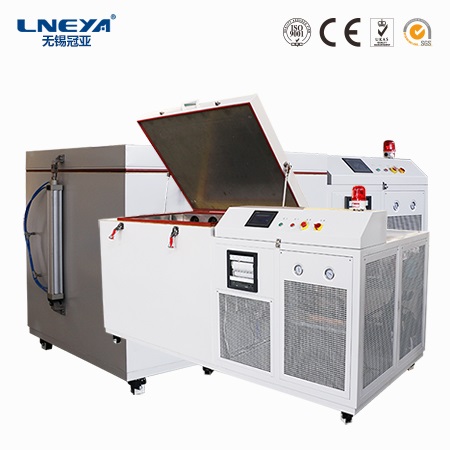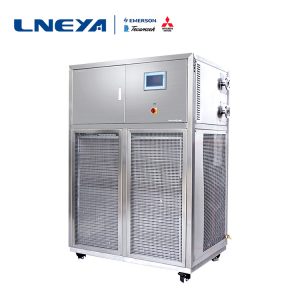Descrizione del principio di refrigerazione del congelatore a cuscinetti LNEYA
LNEYA industrial freezer can be used in the refrigeration process of the bearing industry. Since the use of bearing freezer is relatively large, the performance is very important, so let’s talk about the principle today.
The refrigerant in the bearing freezer circulates in the refrigeration system under the action of the mechanical energy generated by the compressor, and is repeatedly operated in a gaseous state or a liquid state. During this process, the refrigerant continuously absorbs the heat of the cooling water through the plate heat exchanger and discharges the heat through the condenser. By setting the temperature of the temperature control board, the compressor is controlled to reach the set water temperature.
The bearing freezer refrigeration system consists of compressors, condensers, fans, capillary tubes, drying filters, plate heat exchangers and other accessories. After the compressor absorbs the low-pressure and low-temperature refrigerant from the pipeline, it compresses it to generate a high-pressure, high-temperature refrigerant, and then converts it by thermal function to achieve the purpose of refrigeration. The condenser is mainly used for heat dissipation, and the internal refrigerant is condensed into a liquid. The high-temperature, high-pressure gaseous refrigerant discharged from the compressor enters the condenser through the pipeline. The condenser completes the heat dissipation condensation. During this process, the pressure of the refrigerant in the condenser remains unchanged.

The bearing freezer fan forces air convection circulation to dissipate heat from the condenser. The capillary controls the flow of refrigerant into the plate heat exchanger. Maintain a certain evaporation pressure and condensing pressure, so as to vaporize heat absorption and condensation heat dissipation. The bearing freezer drying filter is mainly used to absorb the residual moisture and dust, grease, metal and other foreign matter in the refrigeration system to avoid impurities and moisture in the refrigerant entering the capillary, resulting in “ice blockage” or “dirty blockage”, resulting in refrigeration. The system is not working properly. The plate heat exchanger is mainly used to absorb the heat of the cooling water, so that the internal refrigerant absorbs heat and vaporizes. The refrigerant enters the plate heat exchanger after being throttled by the capillary. After entering the plate heat exchanger, the liquid-gas exchange is realized, and the endothermic task is completed.
LNEYA recommends purchasing from the professional manufacturer of bearing freezer, high quality, wholehearted after-sales service can make the production run more effectively.
Raccomandazioni correlate
-
How to choose a power battery test evaporator?
1288The corrosion of ferrous metals by salt water is very strong, and its corrosion is more severe when it comes into contact with air. Therefore, as far as the production process permits, closed loops should be used as much as possible. For volatile ...
Visualizza i dettagli -
Won the second place in the 2022
1513On November 18, 2022, it was sponsored by the Jiangsu Provincial Association for Science and Technology, the Provincial Taiwan Affairs Office, the Provincial Department of Industry and Information Technology, the Provincial Department of Agricultu...
Visualizza i dettagli -
Motor cooling system tests the effect of condensing temperature
1258The motor cooling system tests the condenser. Under normal conditions, the first half of the heat pipe is very hot, and its temperature has a slow and slow gradual decline in the balance of power. The heat sensitivity of the second half of the hea...
Visualizza i dettagli -
What is the thermal chuck temp control system used for semiconductor testing?
1055The integration of temperature control systems and heat cartridges is mainly used in the testing process of the semiconductor industry, serving the following key purposes: Wafer Acceptance Test (WAT): After the completion of semicond...
Visualizza i dettagli
 Refrigeratori industriali LNEYA Produttore Fornitore
Refrigeratori industriali LNEYA Produttore Fornitore













